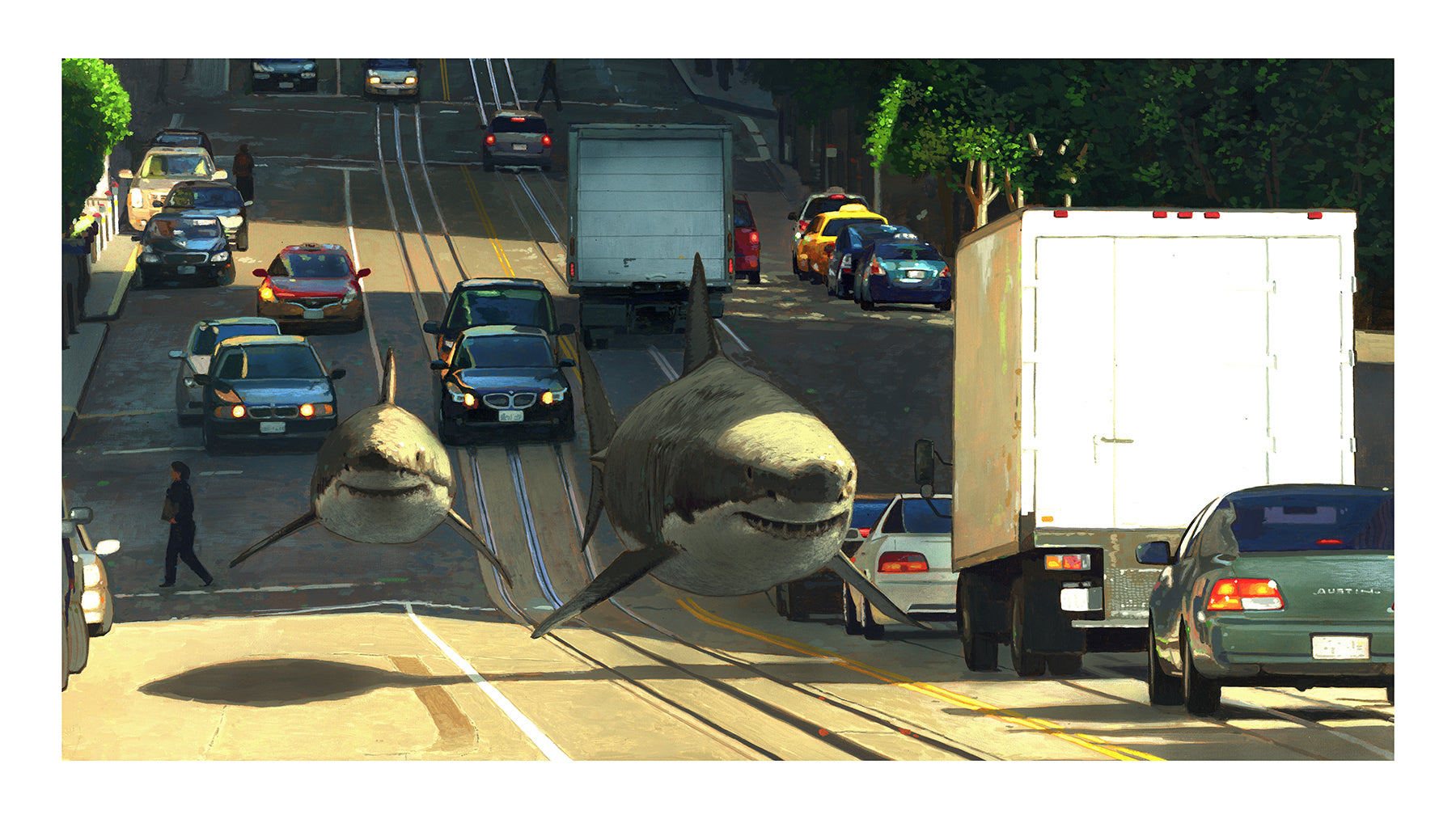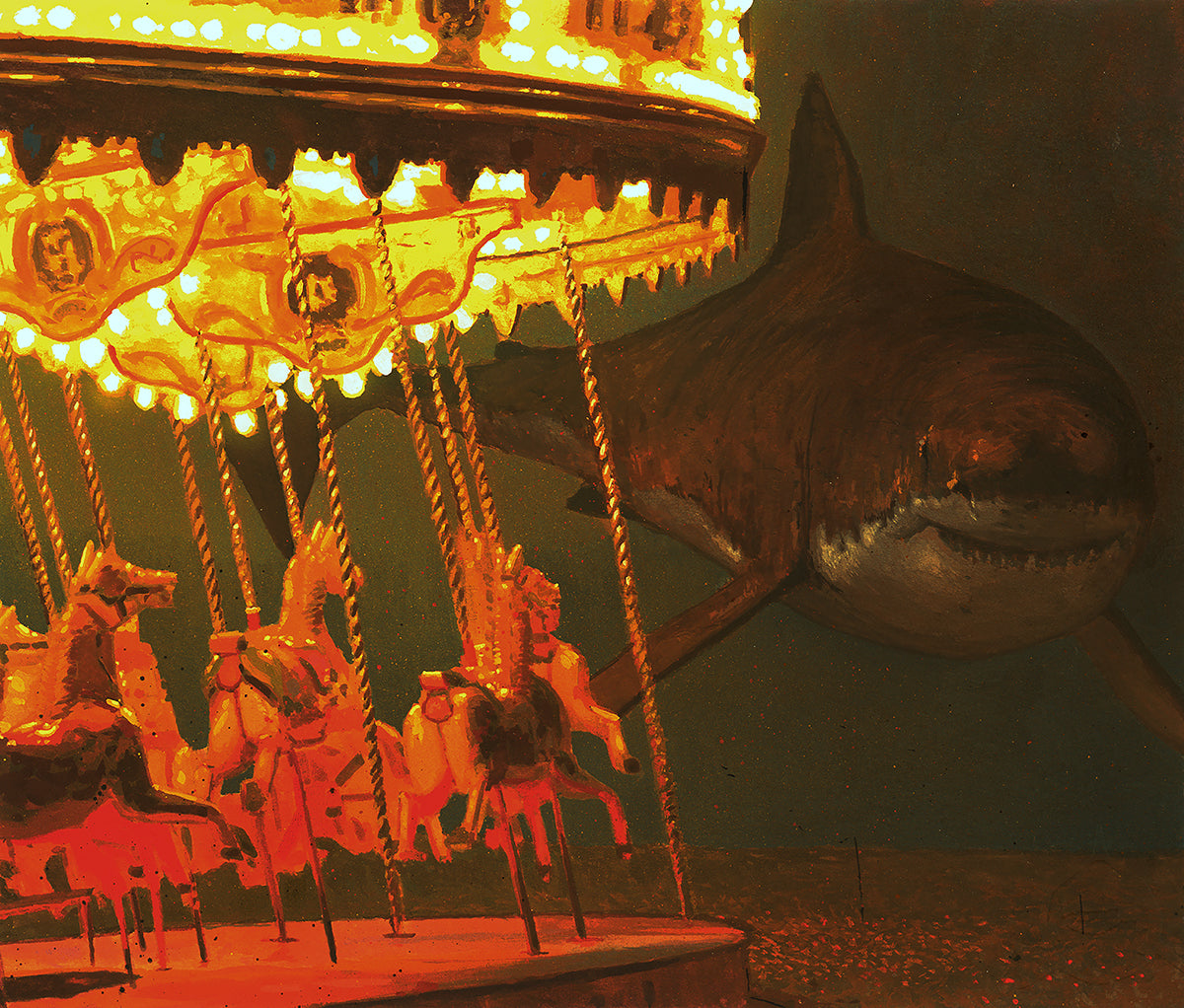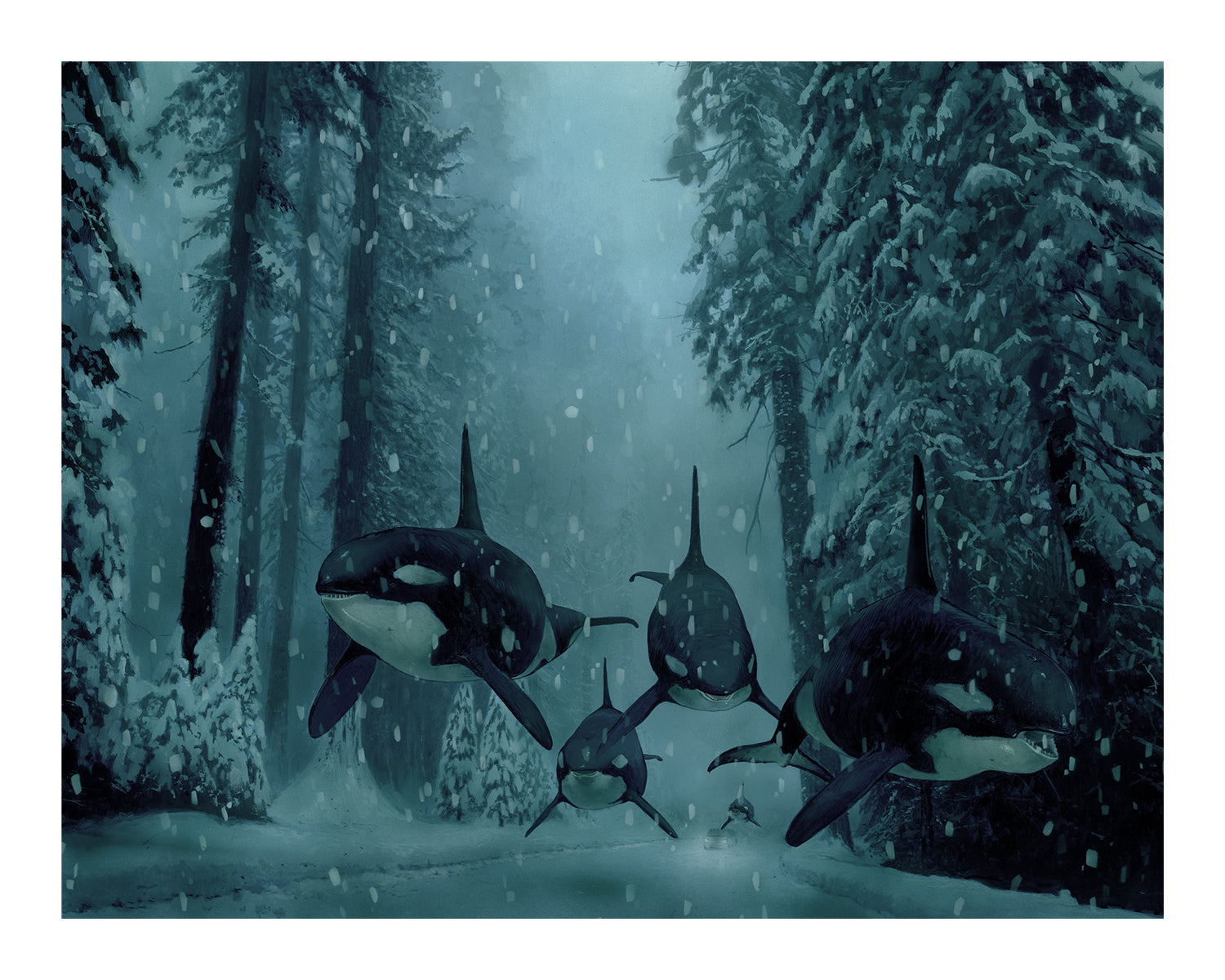
"Final Approach"
On Thursday, The People's Printshop will be releasing a brand new, stunning limited edition print from Portland, Oregon based artist David Rice entitled "Final Approach" (above). To get you familiar with him and his work, we sat down with him to ask a few questions. From growing up in a tourist town to the difficulties of creating, David gives some splendid answers for our readers:
Hi, David! Could you tell us a bit about your life and how you got into painting?
My interest in art first came from my older brother. He is also an artist currently working in Salt Lake City. Growing up we would draw comic book characters on a regular basis. I went to college and got a degree in Studio/digital art. Despite going to school for four years for art, I did not feel like I had really learned the skills it would take to pursue a career in fine art. I set my sights on commercial and digital art. I freelanced in that field for a few years which is what brought me to Portland. After a while of working as a commercial illustrator, I felt a need for a more personal connection to what I was creating. I reached out to artist Blaine Fontana and started working as his studio assistant. I learned so much from Blaine in such a short amount of time. This helped me develop the skills I needed to better portray the art and message I wanted to say.
What bit of growing up in Colorado resonates with you the most other than the outdoors?
I grew up in a tourist town. In the off season the population was about 6,000 but in peak tourist season the population hovers around 30,000 people. These people were coming from all over the country and world. It was a great opportunity to see different walks of life. A lot of the time small towns can feel pretty isolated. I never felt sheltered from the rest of the world because so many people from all over were constantly coming in and out of town, bringing their culture and unique perspectives.

You personify the animals in your artwork, but at times include humans them as well. What is the role of the human in these specific works?
I have become known for painting a lot of animals, but recently have started to introduce more humans into the works as well. The humans are not there to represent separation from the animals but rather a connection with them. I try to bring the two species to the same level, almost having a symbiotic relationship. Not necessarily benefiting each other, but existing cohesively. I will often portray the humans with a backpack or tool of some kind. This is to represent our dependence on outside tools for survival, whereas the animals are perfectly adaptable to surviving without the assistance of anything.
Do your pieces exist in a time period or, perhaps, alternate timeline?
I like to think my pieces exist in a timeline where the present is a combination of the past and the future. I don’t want it to be obvious what period in time it is. Sometimes there will be elements of the past combined with elements of the present or future.

Do you have a favorite animal?
I am not sure if I have a favorite animal. Owls are pretty special to me, though. There was this Great Horned Owl that would show up at my Parent’s house every so often and it always felt like it had more thought and awareness behind its eyes than just a normal bird. I will always remember that guy.
Do you collect artwork?
My art collection is still in its early stages but it has started to take shape over the last few years. I have some great limited edition prints and some unbelievable originals. Being an artist means you can trade with fellow artists and get pieces that you wouldn’t normally be able to afford.

Could you tell us a bit about your release, "Final Approach," with us?
“Final Approach” is a piece I made last year for my show ‘High Alpine’ at Antler Gallery. It is one of my favorite pieces I have painted, both technically and intently. The subject, a chimp in a gold emergency/space blanket, stares toward the sky while holding a leafy branch in an otherwise desolate landscape. Of course, this piece can have a hundred different interpretations depending on the viewer. For me, the subject represents the release of its identity as an “animal,” a creature of lesser importance, and assumes the identity of a being with greater conscious and purpose. It’s longing for its connection with the organic environment it knows in this alien landscape. It carries themes of safety, exploration, distance and dissonance. It is easy for people to make the connection of evolution with this piece. Again, for me, it is not about the subject becoming more than a chimp, rather that chimp realizing its greater purpose and balance within its environment.
What is your normal process when working?
When I want to make a piece, I normally start with a very crude sketch. Then I collect reference material. This normally entails going through a ton of source material and taking a lot of photos. Then I collage together the piece in photoshop. This helps me easily make changes to the composition until I am happy with the overall balance of the piece. Then I will build my panel, sketch out the composition and start painting.

What is your least favorite thing about creating?
My least favorite thing about creating changes from piece to piece. Sometimes it is really easy and fun to come up with an idea or concept, and other times it can be a real struggle. That can be really hard and frustrating at times. Sometimes when I am rendering a highly detailed area of the painting I can have a really hard time staying focused and that makes things difficult. Other times I really enjoy getting into the grit of complicated details. It all just depends on the mood I am in.
What are some books we should read?
I like anything from Douglas Coupland.
What should someone do when they visit Portland?
When someone visits Portland they should go on as many hikes, drink as much beer, and eat at as many different places as they can. This city has the best options of all three of those as far as I am concerned.








Leave a comment
This site is protected by hCaptcha and the hCaptcha Privacy Policy and Terms of Service apply.